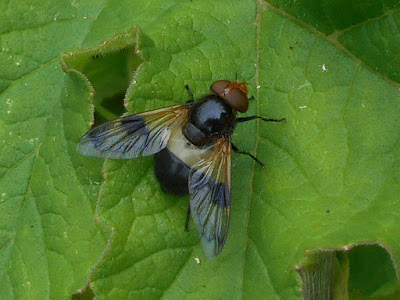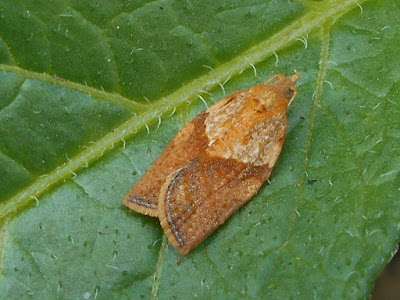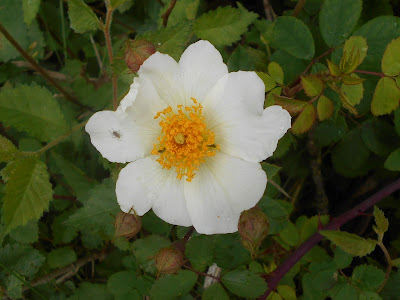It is a striking insect in its bold black and red colours. These are a warning: noli me tangere - touch me not! Apparently the red colour is occasionally replaced by yellow but I have never seen this.
 |
On of our most striking moths, the Cinnabar. Here on our allotment plot.
in early June, 2019
|
Although there are rare records from Coltsfoot, the caterpillar feeds almost exclusively on ragwort and groundsel, two plants which are laced with particularly toxic chemicals and which, despite silly alarmist stories* from people who are keen to drench our countryside with yet more pesticides, are generally avoided by livestock, rarely cause illness and almost never result in their deaths.
Cinnabar is probably best known as a source of mercury, but the moth is named after the oxide from which a red pigment was created and once used by artists in their paints.
On our allotment plot the moths have been flitting around for some weeks now but, as I try to keep the ground free of weeds, there has been no groundsel on which they could lay their eggs. Until today...
A solitary specimen was feeding on a groundsel seedling. Slim pickings indeed! (The seedling with a reddish stem directly to the left is Fat Hen.) Naturally I left the caterpillar undisturbed since the species merits the gardener's protection for the good work it does.
 |
The first one of the year. Cinnabar caterpillar on our allotment,
30 June, 2019
|
The groundsel contains unpleasant toxins which are then stored in the caterpillar's body, hence warning colours, in this case black and yellow. They remain in the insect when it pupates for metamorphosis to the adult (imago) stage. As a consequence of the dangers to would-be predators both the larva and the imago are rarely attacked, although it is said that some cuckoo species will take the caterpillars.
* A parallel exists with stories spread by irresponsible journalists regarding the 'danger' of the False Widow spider which, although there may be people with a rare reaction to a bite, generally causes no problem. I note that the Asian 'Killer Hornet' is now getting the same sensationalist treatment.


















































